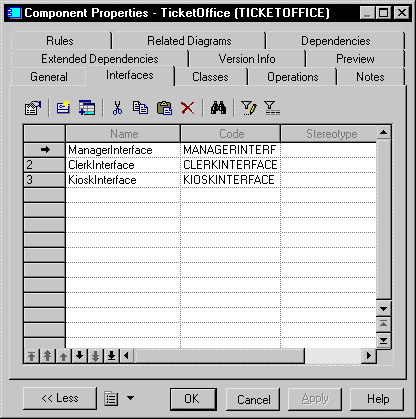

Chapter 6 Building Implementation Diagrams
Interfaces contained in the component are interfaces exposed by the component. This indicates that the component implements the services provided by the interface.
Each component uses one or several interfaces. It also uses or requires interfaces from other components. These interfaces are visible entry points and services that a component makes available to other software components and classes. If dependencies among components originate from interfaces, these components can be replaced by other components that use the same interfaces.
Component interfaces are shown as circles linked to the component side by an horizontal or a vertical line:

The symbol of a component interface is visible if you have selected the Interface symbols display preference from Tools→Display Preferences. The symbol of an interface can be moved around the component symbol, and the link from the component to the interface can be extended.
If you are working with EJB, some of the interfaces have a special meaning (local interface, remote interface, etc...).
For more information on EJB interfaces, see section Defining interfaces and classes for EJB in chapters Working with Java and Working with VB .NET.
Interfaces of a component can be in the same model or in another model. If they are in another model, you can use external shortcuts of interfaces.
You can define an interface for a component from the Interfaces tab of the component property sheet.
![]() To define interfaces for a component:
To define interfaces for a component:

| Copyright (C) 2006. Sybase Inc. All rights reserved. |

| |